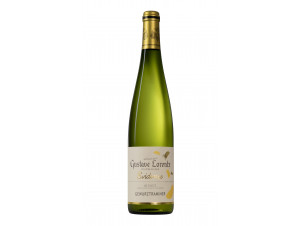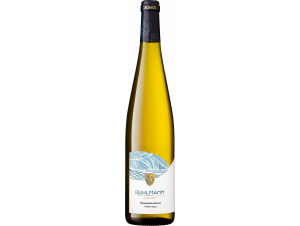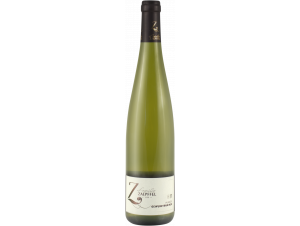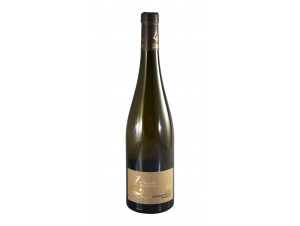You have no items in your shopping cart.
Wine Alsace Gewurztraminer
-
Top Selling-21%
-
Top Selling
-
Top Selling
Gewürztraminer is a recent wine, delicate to cultivate
The Traminer grape variety was introduced into Alsace in the middle of the 16th century. An aromatic selection of Traminer gradually modified its characteristics, until Gewürztraminer, which means "spicy traminer", was born at the end of the 19th century.
It is grown in Alsace, but also in Germany, Austria, the United States, New Zealand, Italy, Hungary and Switzerland. It is white, dry or more syrupy when harvested later. Gewürztraminer is very well established in Alsace. It covers 20% of the region's land planted with vines and thus ranks just behind Riesling, representing 23% of the terroir. Gewürztraminer is grown mainly in the vineyards of Froehn, Altenberg, Florimont, Kessler, Sporen and Osterberg.
Gewurztraminer likes granitic, calcareous and clayey soils, and seeks the best exposure to the sun, or at least to light, when the sky is overcast. Although the Gewurztraminer grape is prized for its wine, it gives its growers a lot of trouble. It is vigorous, but its earliness makes it afraid of spring frosts. It has weak defences against vine viral infections. In any case, it offers only a low yield with its small bunches which, even if healthy, are not very productive.
The demanding AOC Gewurztraminer
Although recent, Gewurztraminer has its own AOC whose decree of origin dates back to 3 October 1962. Its production covers 2,600 hectares and represents 160,000 hectolitres per year. The wine bears the name of the grape variety, but it can bear additional indications. The appellation "Vendanges Tardives" or "Sélection de Grains Nobles" completes certain wines, but this requires compliance with drastic constraints.
The grapes must be harvested by hand. They are over-ripened on the vine until the development of noble rot (Botrytis Cinerea). They must then be harvested in one go after the first frosts for the late harvest or by successive sorting for the selection of noble grains.
Vendanges Tardives" or "Sélection de Grains Nobles" wines must be aged for a minimum of eighteen months, at least until 1 June of the second year following the harvest. The indication of the vintage is always compulsory. The ageing potential is between 2 and 10 years, but for the "Vendanges tardives" and "Sélection de grains nobles", it extends from 4 to 15 years.
The AOC differentiates the taste characteristics that the wine must have. For a classic Gewurztraminer, the wine must be dry, full-bodied, with a nose of rose, violet, spices and exotic fruits. It envelops the nose and fills the mouth.
Late harvest wines should be softer and richer, with a remarkable bouquet and great finesse. White wines made from selections of noble grapes are aromatic sweet wines of great richness.
Gewürztraminer has a unique and recognisable taste
Anyone who has tasted Gewürztraminer knows how to recognise it - you don't have to be a fine oenologist to do so. With its slightly spicy attack and broad spectrum of aromas, Gewürztraminer is a full-bodied and fruity gastronomic wine.
"Gewurz" means "spicy" in German, which justifies its exceptional and very typical aromatic palette. One finds scents of spices and exotic fruits, such as lychee or mango. It is sometimes reminiscent of gingerbread flavoured with rose. When the winemaker delays harvesting, the over-ripening of the grapes reveals sweeter aromas of apricot and honey. The dark pink skin and pulp of the berries produce a rather dark golden yellow wine with copper highlights.
Gewürztraminer is more fragrant and full-bodied than the white wines we are used to. Heady and expressive, its texture is unctuous, but it shows a slight tendency to bitterness, exacerbated by the lack of maturity, which does not please everyone. As it matures, it is an excellent choice to accompany foie gras, fish, or as a dessert wine. It goes wonderfully with fresh fruit and cheese, and of course with Alsatian Münster. It is at its best when served at 10°.
The domains to discover in the Gewürztraminer vineyard
Jean Huttard
The house of Jean Huttard has been cultivating the vineyards of Zellenberg, in the heart of the Alsace vineyards, since 1860. As a specialist in Alsace wines, he reserves a special place for Gewürztraminer. The farm has been certified in conversion to organic farming by Ecocert since 2018. 8 hectares of vines are cultivated in Organic Agriculture on 45 different plots.Each plot is harvested at optimum maturity, in order to create the purest wines. The grapes are harvested exclusively by hand, with respect for the grapes and so that they arrive at the press as intact as possible. Know-how and experience allow Jean Huttard to produce a collection of wines of rich diversity.
Dietrich family
Located in the heart of Alsace, in the centre of the mythical Route des Vins, the Dietrich estate covers 18 hectares. It passes through the villages of Dambach la Ville, Dieffenthal, Itterswiller, Reichsfeld and Albé. Michel Dietrich is keen to preserve the heritage of his father, who himself inherited it from his father, and the vinification remains traditional. Some parcels are still ploughed with the help of their tireless Comtoise mare.The wines are housed in beautiful oak tuns in their cellar dating from 1620, allowing them to work with indigenous yeasts. The wines are aged for about six months in wooden vats or in stainless steel tanks for the aromatic varieties. Michel Dietrich claims a Gewürztraminer with a pretty nose of violets and a touch of aniseed.
Alsace Chasselas ou Gutedel
Alsace Grand Cru Altenberg de Bergbieten
Alsace Grand Cru Altenberg de Bergheim
Alsace Grand Cru Eichberg
Alsace Grand Cru Froehn
Alsace Grand Cru Furstentum
Alsace Grand Cru Hatschbourg
Alsace Grand Cru Kanzlerberg
Alsace Grand Cru Kirchberg de Ribeauvillé
Alsace Grand Cru Kitterlé
Alsace Grand Cru Mandelberg
Alsace Grand Cru Moenchberg
Alsace Grand Cru Muenchberg
Alsace Grand Cru Osterberg
Alsace Grand Cru Pfersigberg
Alsace Grand Cru Saering
Alsace Grand Cru Schlossberg
Alsace Grand Cru Schoenenbourg
Alsace Grand Cru Sporen
Alsace Grand Cru Steinklotz
Alsace Grand Cru Wineck-Schlossberg
Alsace Grand Cru Winzenberg
Alsace Klevener de Heiligenstein


































 TWIL - Achat de Vin
TWIL - Achat de Vin


